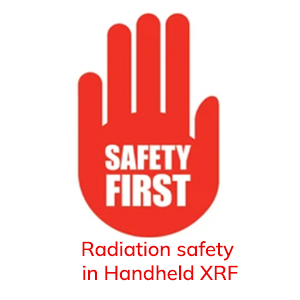Unleashing the Power of XRF: An Introduction to X-Ray Fluorescence Spectrometry
X-Ray Fluorescence Spectrometry (XRF) is an invaluable analytical technique that is widely utilized across industries like mining, geochemistry, environmental science, pharmaceuticals and material science – it has become an indispensable tool for researchers and analysts in these fields. Here we explore its fundamentals as well as its applications and benefits over other forms of analysis.
Principle of XRF
X-Ray Fluorescence Spectrometry operates by exploiting the interaction between X-rays and matter. When exposed to high energy X-rays, samples absorb some of this energy, becoming excited atoms which then release characteristic photons that can be detected and analyzed to ascertain elemental composition within them. Each photon emitting energy specific to that element allows identification and quantification.
An XRF Spectrometer
To conduct XRF analysis, an XRF spectrometer comprises three main components. These are: an X-ray source; sample holder and detector. Most commonly, an X-ray tube provides the source of X-rays, producing high energy beams of radiation that focus onto the sample under investigation; sample holders place samples directly within its path before transmitting these beams towards an emitter detector which measures energy and intensity of photon emission from said source.
Analytic Services that combine qualitative and quantitative techniques.
XRF analysis offers both qualitative and quantitative measurements of elemental composition of samples. Qualitative analysis involves identifying elements present while quantitative analysis measures their concentration levels; its application can also cover solids, powders, liquids and thin films making XRF an invaluable technique for material evaluation.
Application of XRF XRF can be found across many industries and research fields. Mining industries rely heavily on XRF analysis for exploration and characterization of ore deposits as well as monitoring elemental concentrations during production processes; environmental scientists employ it for analysing soil, water and air samples to measure contaminants or trace elements present; the pharmaceutical industry uses it for quality control of raw materials and finished products while archaeological artifacts, geological samples and materials science research also utilize this technology extensively.
Advantages of XRF There are numerous advantages associated with using XRF analysis over other forms of analysis, the primary one being its non-destructive nature allowing for the evaluation of delicate or irreplaceable samples without damaging them. Furthermore, its rapid, highly sensitive, minimal sample preparation needs and low costs make XRF an extremely cost-effective and efficient tool that can detect all elements from lightest to heaviest with high precision and accuracy.
Challenges of XRF While XRF analysis offers many benefits, there can also be challenges associated with it. One such challenge is matrix effects – which may lead to inaccurate results due to interaction of X-rays with sample matrix – although this issue can be partially avoided through careful calibration and standard usage. Furthermore, its surface analysis limitation limits it when dealing with heterogeneous materials such as steel.
Future Developments in XRF
Though limited, XRF analysis remains an active area of research and development. Recent advances in XRF technology have concentrated on increasing sensitivity, precision and expanding detection range. New developments in detector technology, X-ray sources and data processing algorithms could further augment capabilities of XRF analysis in future years.
Conclusion X-Ray Fluorescence Spectrometry is an impressive analytical technique that offers invaluable information on the elemental composition of many samples. Due to its non-destructive nature, rapid analysis, and versatility it has become an indispensable tool in multiple industries and research fields. Although some issues remain with its implementation; ongoing advances in technology will likely enhance its capabilities further in time – overall XRF remains a powerful method for discovering elemental composition of materials while expanding scientific understanding.
